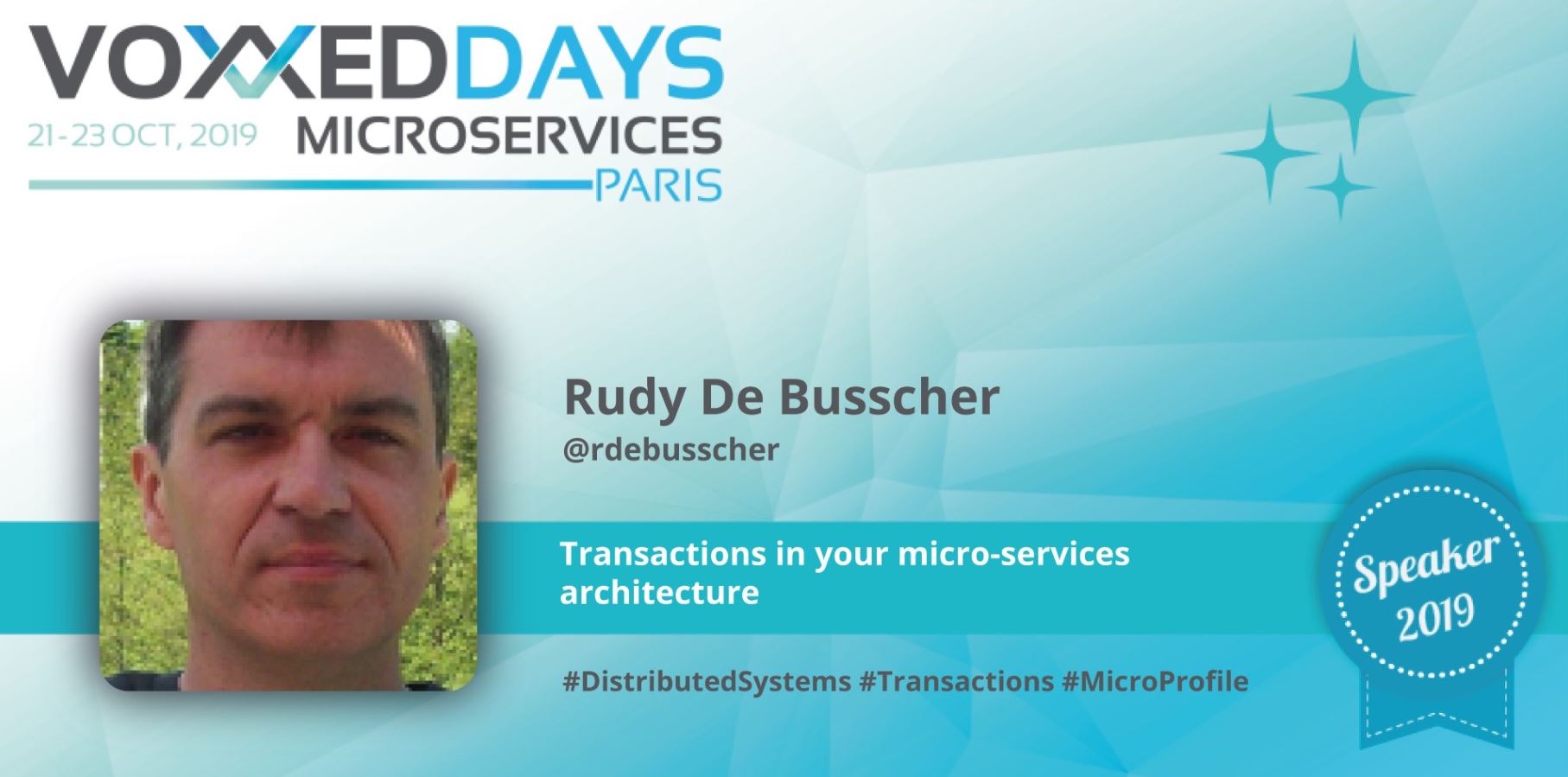


Hi Rudy, tell us who you are and what lead you into microservices?
Hi, I’m currently working in the Service Team of Payara Services ltd, where I’m dividing my time between customer support, writing blogs and user guides, working on specifications of MicroProfile, and helping in some of the coding of the Payara Platform.
Before that, I was a consultant doing a lot of development and saw a lot of people struggling with a chosen architecture, monolith and micro-service style type ones. For certain scenarios, a microservice architecture can be beneficial but it has his challenges. Helping people with these challenges brought me into the microservice world.
What will you be talking about at Voxxed Days Microservices?
Transactions are an easy technique for the developer to achieve data consistency. Changes are all committed or rollback, so your data is always aligned and other sessions see no incomplete information.
But in a distributed environment, this cannot be achieved because data can be spread over several data sources and types of data sources, or we cannot scale distributed transactions very well.
To eventually achieve the data consistency, the SAGA pattern is very popular and describes a procedure to achieve it using the concept of a compensatable action.
The session goes a bit deeper into these problems and concepts and shows you with several examples how you can achieve eventual consistency within microservices with the use of the MicroProfile Long Running Action specification which is developed to address this.
With CAP theorem we got rid of data consistency. Then Google announced Spanner. Where are we now and where are we heading in terms of consistency for distributed systems ?
A lot of ‘traditional’ solutions, like database implementations, have improved in the last few years, and new products like Google Spanner are created to compete with the distributed nature of the microservices world.
But in most cases, we really need another way of thinking about how data is used and how data consistency is achieved. The eventual consistency is then a logical step and the SAGA pattern is used more and more since it has been proven to be useful and relative easily.
#distributedSystems, #transactions, #microProfile
Twitter: @rdebusscher
GitHub: https://github.com/rdebusscher
Company Blog: https://blog.payara.fish/